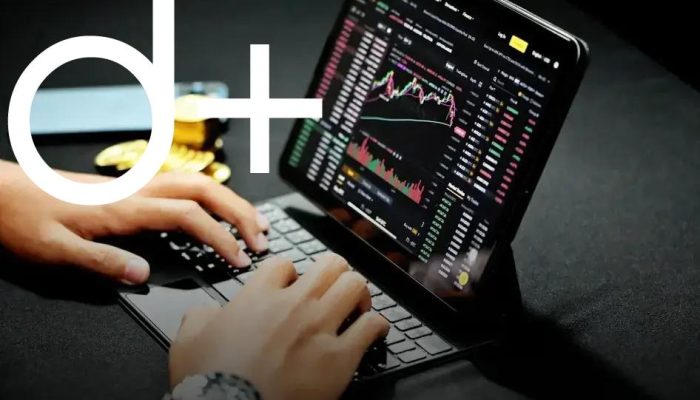Will the U.S. enter a recession in 2024? This question is on everyone’s mind as the new year approaches. Understanding the economic indicators and the potential triggers will be crucial in predicting whether a recession is likely. In this blog post, we will delve into the historical context of U.S. recessions, examine expert predictions, and explore what we can expect in 2024.
Economic Indicators to Watch in 2024
In 2024, several economic indicators will be crucial for understanding potential shifts in the U.S. economy. Investors, policymakers, and businesses should keep a keen eye on these metrics to gauge whether the country might face a downturn. It’s important to monitor the Gross Domestic Product (GDP) growth rate, as it provides a comprehensive overview of economic health. If growth slows, it could signal underlying weaknesses in the economy.
Unemployment rates are another vital indicator. A sharp rise could suggest economic trouble on the horizon, while stable or falling unemployment rates typically indicate a healthy job market. The Consumer Price Index (CPI)
Additionally, observe the trends in retail sales. This metric reflects consumer confidence and spending power, both critical for sustaining economic momentum. If retail sales begin to falter, it might be a warning sign of reduced consumer confidence. The actions of the Federal Reserve can’t be overlooked either. Its decisions regarding interest rates will heavily influence borrowing, spending, and economic activity. Higher interest rates may cool down an overheating economy, while lower rates could stimulate investment. Lastly, keep an eye on stock market performance. Though volatile, it can provide insights into investor sentiment and expectations about future economic conditions. A prolonged downturn in the markets could indicate broader economic challenges. There are several factors that may contribute to the onset of a recession in the U.S. The combination of these factors can lead to economic slowdown, decreased consumer confidence, and ultimately, a recession. High Inflation Rates: Persistently high inflation can erode purchasing power and increase the cost of living. If wages don’t increase at the same rate, consumer spending can fall, leading to economic contraction. Interest Rate Hikes: The Federal Reserve may raise interest rates to combat inflation. While this can help stabilize prices, it can also deter borrowing and investing, impacting businesses and consumers. Geopolitical Tensions: Conflicts or trade disputes can disrupt global supply chains and lead to market uncertainty. This can result in reduced trade activity and economic instability. Stock Market Volatility: Unstable stock markets can lead to a loss of wealth and confidence among investors. This can reduce spending and investment, slowing down economic growth. Debt Levels: High levels of debt, both consumer and national, can constrain spending and investment. If interest rates rise, the cost of servicing debt increases, leaving less room for economic growth. Global Economic Slowdown: An economic slowdown in major economies like China or the European Union can spill over and affect the U.S. economy, reducing exports and economic activity. Understanding these potential triggers can help in anticipating economic challenges and preparing for future financial planning. U.S. recessions have occurred in various forms and severities throughout history. The economic cycles are influenced by myriad factors including financial crises, policy decisions, and global events. Identifying patterns from previous recessions can offer insights into what might trigger future economic downturns. Understanding the Past: The Great Depression in the 1930s remains the most severe economic downturn in U.S. history. It was marked by a substantial drop in consumer spending and investment, widespread bank failures, and deflation. The government’s intervention, through New Deal policies, played a key role in the recovery process. In more recent times, the 2008 financial crisis, known as the Great Recession, serves as a significant point of reference. Triggered by a catastrophic failure in financial and housing markets, it led to severe global repercussions. This recession saw massive government bailouts and financial sector reform to prevent future crises of similar magnitude. Historically, each recession has unique causes, whether it’s an oil price shock in the 1970s or the dot-com bubble burst in 2001. Analyzing how these recessions unfolded helps us understand economic vulnerabilities.Potential Triggers for the U.S. Recession

What Could Push the Economy into Recession?
Historical Context of U.S. Recessions
Mental Framework
During economic downturns, countries often reassess their fiscal and monetary policies. Strategies that have proven successful in the past include monetary easing, fiscal stimulus, and regulatory reform. The Federal Reserve often plays a crucial role in navigating through recessions, adjusting interest rates to influence economic activity.
By examining past U.S. recessions, one can anticipate the potential signs of a forthcoming economic downturn. This knowledge serves not only economists and policymakers but also businesses and consumers trying to safeguard their financial interests in unpredictable times.
Expert Predictions and Insights for 2024

Experts are closely monitoring several key trends in 2024 as they analyze the likelihood of a U.S. recession. Economists are focusing on labor market dynamics, which have remained relatively stable but face potential challenges such as wage inflation and unemployment rate changes. These factors are set to play a pivotal role in determining economic outcomes.
Another area of interest is the monetary policy managed by the Federal Reserve. Experts predict potential shifts in interest rates which could influence borrowing and spending patterns nationwide. With ongoing global uncertainties, Fed policy will directly impact consumer confidence and business investments.
Global trade tensions are another component experts are weighing heavily. Trade policies and relationships can affect market confidence and thus influence economic stability. The interplay between U.S. economic policy and global market reactions will be under scrutiny.
Additionally, experts highlight the importance of technological advancements and their role in productivity. With increased automation and digital transformation, industries are evolving, which may offset potential recessionary pressures.
Taking all these factors into account, experts emphasize a cautious yet optimistic outlook. They suggest that while potential risks exist, strategic policy measures and adaptive industry responses could mitigate recessionary threats in 2024.







![BANNER 1 - HOME [QUADRADO]](https://dailyfindinvestment.com/wp-content/uploads/2025/01/BANNER-300-X-300.gif)
